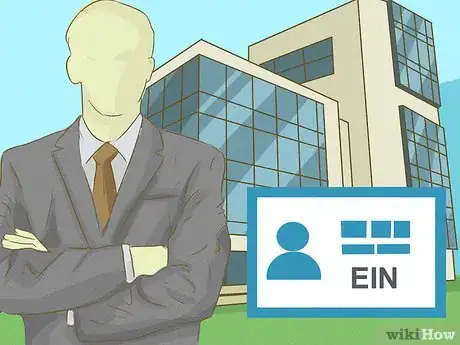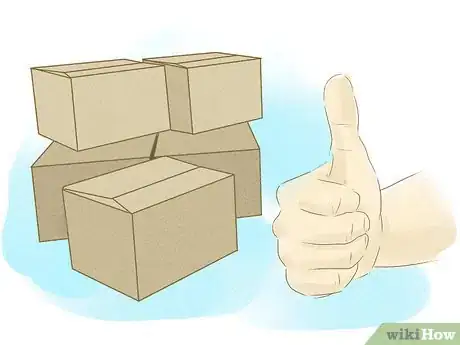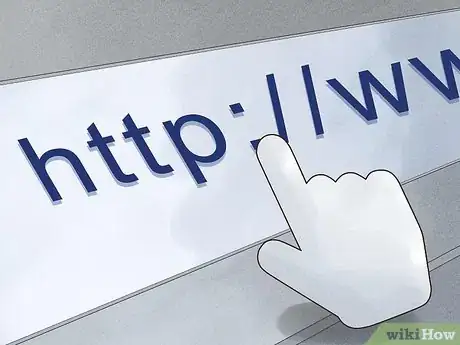wikiHow is a “wiki,” similar to Wikipedia, which means that many of our articles are co-written by multiple authors. To create this article, 9 people, some anonymous, worked to edit and improve it over time.
There are 12 references cited in this article, which can be found at the bottom of the page.
This article has been viewed 98,945 times.
Learn more...
Leasing is a process by which individuals can pay for the use of a home, car, or other item for a specified period of time. At the end of this contractual period, the leaser is usually able to purchase the item, with the amount of money previously paid going towards the purchase price. Leasing is a popular option for many people around the world. To start a leasing business you will need a clear vision and structure for your company as well as start up capital to help you purchase the goods which you will then lease out.
Steps
Planning Your Business
-
1Conduct some market research. If you are interested in starting a leasing company the first task is to research the leasing market in your locality. Look for your leasing businesses that are successfully operating and note down the type of items they deal with. You can start just by searching for a particular range of products you would like to lease online and seeing what is available. This initial market research is essential to inform how you develop your plans for your business.
- If you are thinking of starting a kitchen equipment leasing company, but there are a number of well-established companies already doing this it could be hard to break through.
- Alternatively, the success of existing businesses could indicate a particularly strong demand for a particular range of leasing items in your area.
-
2Use a variety of sources for research. There are a number of online market research resources that can easily be found through search engines. These services have extensive databases, but the reports are not free to read.[1] [2] The US government supplies financial and market data that you can access for free when you are doing market research.[3]
- Look in the financial press for news on develops in the industry you are interested in.
- Be sure to tailor your research to your business ideas. If you are starting up a small local leasing business, knowing about the large international markets will be of less immediate relevance.
Advertisement -
3Decide what you will lease. Once you have a clear picture of the market, you need to begin to develop your ideas about what exactly your leasing business will do. If you have specialist knowledge or experience in a particular line of business this can inform the direction you and your business takes. For example, if you have worked in an auto showroom you might have useful knowledge about the auto market that could help you set-up an auto leasing company.
-
4Investigate the costs. A leasing business is one that can require relatively high amounts of start-up capital. It is a business which works by buying things and then leasing them out to other businesses, so you will need to be able to build up a good stock of equipment before you can start leasing things out. Before you get any further consider the potential costs and draw up some basic estimates.
- All of this research on the leasing market, the costs and the potential profits will be used when you write up your formal business plan.
-
5Draw up a business plan. A clear business plan is important when starting a leasing company, especially if you plan on borrowing money. If you can present a convincing and well-researched business plan to your bank, they are more likely to financially support your new leasing company. A business plan will generally begin with an executive summary and company summary which will outline the core values and structures of your business.
- Your business plan should clearly state what items you plan to lease and a market analysis summary which details where in the market your business will be situated.
- It should also include a strategy and implementation summary outlining how your business will operate, as well as a management summary detailing how it will be managed.
- You can access helpful examples of business plans for leasing companies online.[4]
- It is essential to have clear and well-researched financial plans which are realistic and achievable.[5]
Fulfilling Legal, Financial and Regulatory Requirements
-
1Investigate legal requirements. Before you go any further in your business planning and development you must ensure you fully understand the legal and regulatory requirements for those starting a new leasing business. If you are inexperienced in business, this can be a confusing and even intimidating experience. There are finance laws, labour laws, marketing laws, privacy laws, and more that you need to consider.[6]
- You will be able to take care of some of the legal requirements on your own. These include, naming the business, filing and registering paperwork to indicate that you are starting a business, forming a Limited Liability Company (LLC), or business partnership.[7]
- There are some things that you will need a lawyer or attorney for. These include forming a corporation, filing a patent, litigation, or if you are buying or selling a business.[8]
- Working with an attorney who specialises in business law and start up companies can be a highly beneficial move if you are not experienced. An attorney will be able to advise you on legal and regulatory matters as well as the financial and contractual decisions you have to make.[9]
-
2Register your business. It's essential that you ensure the business is properly registered. To operate legally, your organization will need to be registered in the state in which it runs. Luckily, the process by which a business is registered is relatively simple. Business license application forms can usually be found at city hall.
- You will also need to register your business on the Federal level. To do this, you must obtain an Employee Identification Number (EIN).
- Obtain an EIN by visiting the website of the Internal Revenue Service and filling out the appropriate online forms.
- A State Sales Tax ID is issued by your state and gives your business the authority to collect sales and use taxes, as well as issue any tax exemption documents.
-
3Secure finance. It is highly likely that you will require funding to set-up and run the leasing company. You need to have a clear understanding of your financial needs as well as the long and short term financial projections for your business. Getting a loan is not easy so it's important that you understand the key issues a lender will consider. These include:
- Your ability to repay the loan as evidenced by your business plan and projections.
- Your credit history.
- Your collateral.
- Any equity financing you have in place. That is, investment from other sources.
- Your management experience and track record in business.[10]
- Leasing companies are not eligible for financial support from the US Small Business Administration.[11]
-
4Consider incorporating your business. As you develop your plans you can consider incorporating your business. An advantage to this is that you are limiting your liability so your personal assets will not be seized if the business runs into difficulty. Instead you will become a shareholder who is not held responsible for the company's debts. This is a good way to protect yourself financially. Consult with a business attorney to see if this is the appropriate route for your business to take.
Developing Your Operations
-
1Build up your business's physical infrastructure. Once you have taken care of all the preparatory steps you can start to formalise your business and make it a reality. A leasing business will require a strong physical infrastructure to meet the needs of its clients. Depending on what your business specialises in, you will need premises to store your leasing equipment as well as office space to conduct the business.
- You will also need staff and vehicles to deliver the items that are being leased out.
- Refer to the implementation strategy section of your business plan.
-
2Acquire your inventory. The essential component of a leasing company is the inventory of items that you will lease out. As such, you should take your time and negotiate with suppliers to be sure that you are getting a good deal and can expect to make a profit. You will have developed a good knowledge of your industry when conducting your research, so should know how much you can expect to lease a product for, before you start buying up your inventory.
- Buying in bulk will reduce the unit cost and potentially increase the profit margin on each leasing contract you complete.
- Spending a lot of money establishing a large inventory can be a risky move for a start-up business when the future is unknown. You need to carefully consider the size of your orders and don't get in over your head.
- Excellent market research will help you decide on how much inventory to purchase in the first instance, but this is always an imprecise science.[12]
-
3Lower the cost of buying inventory. Try to find ways to lower the cost of buying inventory, especially in the early days of your business when the future is insecure. Doing this can give you more financial breathing room while you work on establishing your business and its place in the market. Contacting suppliers at the end of month to see if they have excess stock at reduced prices is one way to do this.
- Try to ensure that termination clauses are built into your contract with the supplier so you can cancel a contract a point before it would otherwise end. For example, a termination clause might enable the contract to end after a year rather than after three.
- You can also ask to spread payments over the duration of a contract rather than paying for everything up front.[13]
-
4Develop your online presence. Websites and effective online networks are essential to any new business. Your website will most likely be the first point of contact for potential customers so you must ensure that it is easy to use and navigate, and it clearly lays out what your business does. Have clear goals for what you want your website to achieve and a determined budget set aside for its creation and maintenance.
- You should aim to have a website that is relatively simple and enables customers to click through and make orders with just a few clicks.
- It's important to analyse the effectiveness of your website once it is up and running. Using web analytics will enable you to gain a clearer view of how your website is working in practice.
-
5Use branding. When you are building up your business identity through physical premises as well as an online presence and marketing campaigns, it's important to develop a coherent brand. Start with an eye-catching logo that reflects the qualities of your company and have a consistent visual presentation across all different platforms. You want your business to be easily recognisable and have a strong identity.
- Often businesses hire specialist designers to produce a logo and branding imagery because it is considered such an important element.
- Once you have a logo, you will not want to change it often or at all. Be sure you are happy with something before signing off on it.
-
6Promote your services. To find clients and develop contracts you need to effectively market your business. This can be tough at the beginning so be innovative and consider various special offers and deals to attract new customers. If you are starting a new leasing company, you will probably have a limited marketing budget so it's important that you use the money wisely and strategically. Target your marketing very specifically at key areas where your research has shown there to be a demand.[14]
- For example, if you are leasing farm equipment, advertise in relevant publications and at relevant events where your target audience are most likely to be found.
- The market analysis conducted for your business plan should indicate where the demand for your services is to be found.
References
- ↑ http://www.marketresearch.com/Service-Industries-c1598/Business-Services-Administration-c44/Leasing-c584/
- ↑ http://www.ibisworld.com/industry/default.aspx?indid=1350
- ↑ https://www.sba.gov/blogs/conducting-market-research-here-are-5-official-sources-free-data-can-help
- ↑ http://www.bplans.com/retail_property_sub-leasing_business_plan/company_summary_fc.php
- ↑ https://www.sba.gov/writing-business-plan
- ↑ https://www.sba.gov/category/navigation-structure/starting-managing-business/starting-business/business-law-regulations
- ↑ https://www.sba.gov/blogs/when-hire-lawyer-business-matters-and-when-do-it-yourself
- ↑ https://www.sba.gov/blogs/when-hire-lawyer-business-matters-and-when-do-it-yourself
- ↑ http://www.entrepreneur.com/article/58326
- ↑ https://www.sba.gov/content/borrowing-money
- ↑ https://www.sba.gov/content/sba-financial-assistance-eligibility
- ↑ http://www.entrepreneur.com/article/74896
- ↑ http://www.entrepreneur.com/article/74896
- ↑ http://www.streetdirectory.com/travel_guide/175306/business_loans/how_to_market_your_equipment_leasing_business_properly.html
About This Article
Before you start a leasing company, decide what items you will lease, such as vehicles, construction equipment, or technology equipment. If you have a specific skill set, like working in an auto showroom, choosing to lease vehicles might be a good option for you. Once you’ve decided what you want to lease, you’ll need to register you business with the state, which you can do at your local city hall. Additionally, depending on your finances, you may want to talk to your bank about securing a loan for your business. To learn how to build up your inventory for your new leasing company, read on!












































































